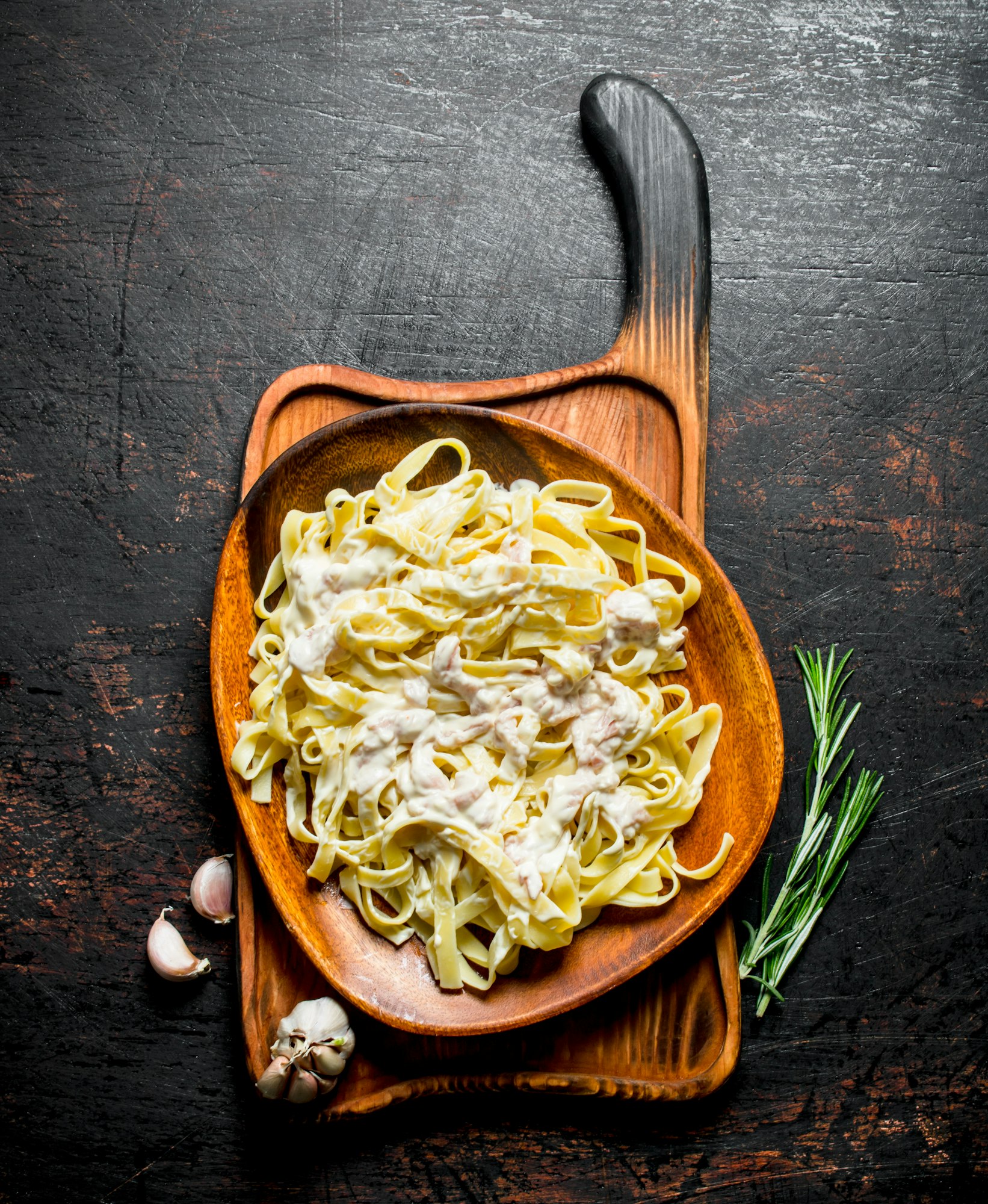Craving for a plate of creamy, velvety Italian Carbonara but not sure how to achieve that perfect texture at home? You’ve arrived at the right place. In the world of pasta, few dishes can rival the sheer simplicity and indulgence of a well-made Carbonara. The heart of the dish lies in the luxurious creaminess of the sauce, which, contrary to popular belief, doesn’t come from cream at all. Instead, it’s a delicate concoction of eggs, cheese, and pasta water. Today, we’ll take you through the authentic Italian way of making this classic dish—with a focus on how to create that silky-smooth sauce, and why guanciale, not bacon or pancetta, is the secret star of the show.
The Essential Ingredients for True Italian Carbonara
Let’s start our culinary journey with the ingredients. At the core of any traditional Italian Carbonara, you’ll find these crucial elements: pasta, eggs, pecorino cheese, guanciale, and black pepper. Each one plays an integral role in the final result of the dish, and skipping or substituting any of them could drastically change the dish’s character.
Lire également : How to Prepare a Gourmet Welsh Rarebit with Sharp Cheddar and Dark Ale?
Pasta
While spaghetti is the most common choice for Carbonara, other long, thin pasta types like linguine or fettuccine will work just as well. The important thing is to cook your pasta in generously salted water until it reaches the perfect ‘al dente’—or ‘to the tooth’—texture. This ensures the pasta is cooked through but still has a slight bite to it—a vital characteristic of Italian pasta dishes.
Eggs
The eggs are what give the Carbonara its rich and creamy sauce—sans cream. The recipe typically calls for whole eggs, though some versions use a combination of whole eggs and egg yolks for extra richness. It’s crucial to whisk your eggs thoroughly before adding them to the pasta to create a smooth, rather than scrambled, sauce.
Sujet a lire : How Can You Master the Art of Perfect Pastry Cream for Eclairs?
Pecorino Cheese
The cheese of choice for a traditional Carbonara is Pecorino Romano, a hard, salty Italian cheese made from sheep’s milk. The cheese adds depth of flavor and helps to thicken the sauce. While Parmesan is often used in place of Pecorino, the two cheeses have distinctly different flavors and using Parmesan will yield a less authentic result.
Guanciale
Guanciale, a type of Italian cured meat, is the preferred choice for Carbonara over its more famous cousins, pancetta and bacon. It is made from pork jowl or cheeks, and its intense, savory flavor is unbeatable. Though less common outside of Italy, it’s worth the effort to find it.
Black Pepper
Last but not least, freshly ground black pepper adds a kick of spice to balance the richness of the dish.
The Secret to the Silky Sauce
Now that we’ve gathered our ingredients, let’s move on to the heart of the Carbonara—the sauce. Achieving that silky-smooth texture requires a bit of technique and a lot of attention to detail.
The first secret to the perfect Carbonara sauce is to add the egg and cheese mixture to the pasta off the heat. This will prevent the eggs from scrambling—a common problem when making Carbonara. Instead, the residual heat from the pasta will gently cook the eggs, creating a creamy, custard-like sauce.
Another crucial detail is to save some of the pasta water before draining your cooked spaghetti. This starchy water is the secret weapon in achieving the velvety texture. By adding a bit of this water to your egg and cheese mixture, you’ll create an emulsion that helps to evenly coat each strand of pasta with sauce.
Guanciale: The Underrated Star
While the creamy sauce might be the first thing you notice in a Carbonara, the guanciale is the hidden hero that gives the dish its distinctive flavor. This Italian cured meat is salted, then aged for several weeks, which intensifies its flavor. The fat from the guanciale is rendered down and used to coat the pasta, infusing the entire dish with its savory goodness.
If you’re unable to find guanciale, pancetta can be a reasonable substitute. However, keep in mind that pancetta has a milder flavor, so your Carbonara will be slightly less flavorful. Bacon, while readily available, has a smoky flavor that can overpower the delicate balance of flavors in a Carbonara.
Cooking It All Together
With all the ingredients and knowledge at hand, it’s time to cook. Start by frying the diced guanciale in a hot pan until the fat is rendered and the meat is crispy. Meanwhile, cook your pasta in a pot of salted water.
While the pasta is cooking, whisk together your eggs, grated Pecorino, and a good amount of black pepper in a separate bowl. Remember to save a cup of the pasta water before draining the spaghetti.
Once the pasta is cooked and drained, add it to the pan with the guanciale. Remove the pan from the heat, then slowly pour in the egg mixture, stirring constantly to create a smooth, creamy sauce. If the sauce appears too thick, add a bit of the reserved pasta water until you achieve the desired consistency. Your authentic, silky-smooth Italian Carbonara with guanciale is now ready to be enjoyed. Buon appetito!
The Art of Balancing Flavors in Pasta Carbonara
In addition to the texture, achieving the right balance of flavors in pasta carbonara is an art. The key is to respect the individuality of each ingredient while ensuring they work harmoniously together.
When cooking the pasta, remember to generously season the water with salt. This is the only opportunity you get to season the pasta itself, and it lays the foundation for the flavors that follow.
When preparing the egg mixture, the proportion of pecorino romano cheese to egg is critical. Too much cheese can make the sauce heavy and overly salty, while too little will leave the sauce thin and lacking in flavor. Aim for a balance that creates a creamy, rich, and flavorful sauce that isn’t overwhelming.
The quality of the cheese is also crucial. Pecorino Romano has a robust, tangy flavor that’s essential in a classic carbonara recipe. If you substitute with parmigiano reggiano, the result will be a milder, less tangy sauce, and the dish will lose some of its characteristic bite.
The guanciale sets the stage for the sauce. The rendered fat from the guanciale is mixed with the hot pasta, creating a base that carries the flavors of the egg and cheese mixture. If replacing guanciale with bacon or pancetta, remember that these substitutes have different flavor profiles and won’t provide the same depth of flavor.
Finally, don’t forget the black pepper. It’s more than just a seasoning; it adds a subtle heat and complexity that contrasts beautifully with the creamy sauce. Always use freshly ground black pepper, as pre-ground pepper can taste stale and lack the same punch.
Wrapping It Up
A well-made Carbonara is a delight to the senses. The aroma of the rendered guanciale, the silky texture of the sauce, the al dente bite of the pasta, and the warming heat of the black pepper all come together in a dish that is simple yet incredibly satisfying.
At the heart of this classic Italian dish is a respect for the ingredients and the method. While there may be quicker or easier ways to make a pasta dish, the traditional approach to Carbonara rewards the effort with extraordinary flavor and texture. From the use of guanciale to the addition of pasta water in the sauce, every step and ingredient in the recipe has a purpose and contributes to the final result.
If you’ve only ever had carbonara with cream or with bacon, I encourage you to try making it the traditional way. The depth of flavor and the silky texture of the sauce are unlike anything you’ll get from shortcuts or substitutes. The key to a silky-smooth Italian Carbonara with guanciale isn’t a secret ingredient or a complicated technique—it’s about using high-quality ingredients and following the traditional method with care and attention.
In the end, the beauty of Carbonara lies in its simplicity. It’s proof that, with the right ingredients and a bit of technique, the simplest dishes can be the most delicious.







